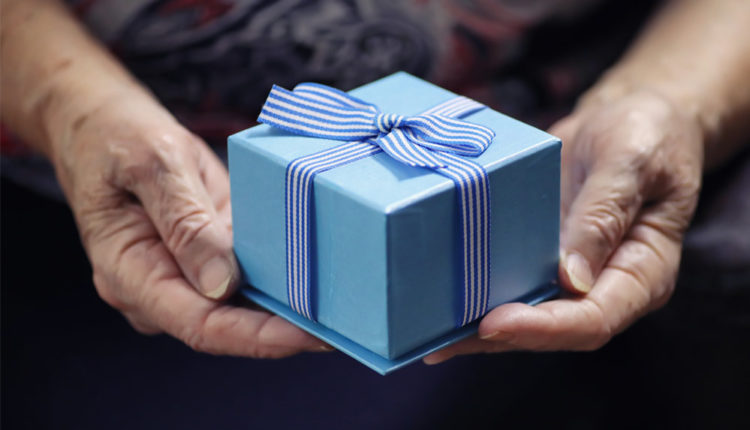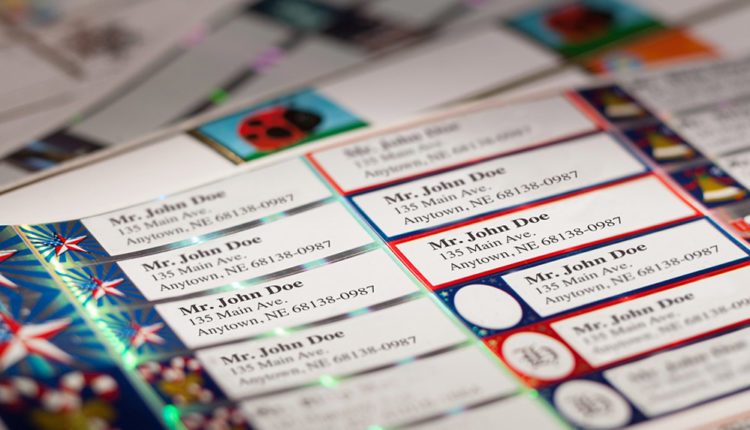Non-Profit Persuasion Lesson from Jay-Z

Rapper and entrepreneur Jay-Z might not seem like an expert in non-profit persuasion. But, he just taught a lesson in how to employ Robert Cialdini’s reciprocation influence principle. Read on…
Did you ever get a pack of address stickers, greeting cards, or something else of modest value from a non-profit soliciting contributions? At first glance, this seems wasteful. Why would an organization spend the money to send out gifts when they know most people won’t donate?
Most recipients won’t donate, even when they get free stuff from a charity. But, you can be certain that these gifts pay for themselves in additional donations. Many of the non-profits that use this “free gift” technique are very sophisticated direct marketers. If they are sending gifts with their solicitations, past testing proved that the lift in response outweighs the cost.
Reciprocation Works

Reciprocation, sometimes called reciprocity, is one of Robert Cialdini’s original six principles of influence. In short, it says that you will be more persuasive if you do something for someone else with no expectation of anything in return. It could be doing someone a favor or giving them a gift. One of Cialdini’s classic experiments studied restaurant servers who left one or more mints with the bill. Tips were bigger when they left a mint, and bigger still with more mints.
This concept underlies the use of gifts for both businesses and non-profit persuasion.
It’s important that the favor or gift must be offered freely, without an overt demand or expectation of something in return. While quid pro quo exchanges can be effective persuaders – for example, useful content in exchange for someone’s email address – that’s not reciprocation.
Separating the gift completely from the donation request would have been the purest form of reciprocity. For example, Jay-Z could have sent the watch a few weeks earlier merely as a sign of friendship. But, since there was no requirement that the gifts be returned if the donor gave nothing, this still counts.
How Jay-Z Rolls

Jay-Z’s use of reciprocation for non-profit persuasion bears little resemblance to those free address stickers. When it came time to send out invitations for his Shawn Carter Foundation Gala, the rapper sent VIP invitees Rolex watches. For a personal touch, he also included a bottle of his own (expensive) brand of champagne.
The watch alone may have cost close to $40,000. Is this a crazy waste of money or clever marketing?
Learn how Jay-Z used persuasion science to get non-profit donations. #nonprofit #Neuromarketing Share on X
Analyzing Jay-Z’s Gift
Without knowing how many Rolexes were sent and the value of the donations received from the invitees, it’s impossible to say this worked. But, a few points suggest that, in this case, an extravagant gift might be effective:
- The recipients were wealthy VIPs themselves. They are constantly solicited for money and other forms of assistance. A gold Rolex cuts through the clutter of all the other pleas.
- Because of the VIP’s wealth and status, creating a reciprocation effect takes more than free address labels or even a nice fruit basket. An over-the-top effort like this practically demands something in return.
- According to Essence, two invitees, Meek Mill and Swizz Beatz, posted photos of their VIP gifts on social media. Those two alone have more than 20 million Instagram followers combined. This publicity no doubt created envy among VIPs who didn’t get an invite and created millions of impressions publicizing Jay-Z’s non-profit.
Assuming that the invite recipients were selected carefully, I think this strategy will be a success. Imagine getting a gift of this magnitude from the best known and most powerful celebrity in your space. Now imagine a fellow celebrity saying, “Thanks, I’ll keep the watch. Good luck with your event.” Unlikely, right? I would expect most to contribute at least the value of the gift, if not much more.
Of course, a low volume, one-off strategy like this can be risky. There’s no way of testing a small sample first like the address-label gifters do.
There’s also a chance that an extravagant gift could backfire. Some recipients might think that donating the value of the watch directly to the charity might be more prudent. In this case, though, I think the perception isn’t that the non-profit is taking the risk of an expensive invitation itself. Rather, it’s that the wealthy sponsor is reaching into his own pocket to get attention for a worthy cause.
It’s worth noting that research shows bigger gifts work better in low-value (greeting cards, not Rolexes) promotions.
Non-profit Persuasion (If You Aren’t Jay-Z)
There’s a high probability that you aren’t a billionaire star and entrepreneur. And, you likely won’t be able to send donors $40K gift bags. But, reciprocation can still be part of your non-profit persuasion strategy. Here are a few ways to do it right:
Match the gift to your audience
Wealthy donors are unlikely to be influenced by a cheap gift. If they discard it, the gift might even seem more wasteful than frugal. On the other hand, if a non-profit seems to be using costly gifts in solicitations, that too could be seen as wasteful.
At the other end of the spectrum, holiday stickers, pens, and, of course, address labels have all been shown to increase results with small donors. Study your target donors and give them something that will be meaningful and neither too extravagant nor too cheap. Be sure whatever you gift is authentic – a fake Rolex won’t cut it!
Relate the gift to you or your cause
Are supporting a cause that has a specific geography or identity? Is there a gift that can emphasize that? A handcrafted item, or a branded item with a tie to the cause?
Imagine that Jay-Z had wanted to reach a tier of donors that were unlikely to make six-figure donations. Instead of Rolexes, he might have given each a case of his own champagne, perhaps identified as a limited edition. Or, for even smaller donors, a single bottle, autographed and presented in an attractive way. This would feel more personal than a generic gift of the same value and tie directly to the non-profit’s brand.
The more personal the gift is to the cause or its sponsor, the less likely it will be seen as a waste of resources.

Personalize the gift to the donor
I suspect that the reason address labels have been such a popular gift for non-profit direct mailers is that their personalization makes them more persuasive. They require more effort to produce, and the donor knows that they are only useful to him. The labels can’t be returned or passed on to anyone else. Throwing them away might create a sense of guilt. So, the only logical action is to accept the gift. For some, reciprocation will kick in and they will send a donation.
Promotional material sellers use the same technique. Rather than sending a generic pen as a sample, they will send a pen with your business name printed on it. This costs a little more but gives the gift more impact. (See also Nonprofit Marketing: The Power of Personalization.)
Whatever you might choose to give someone, personalizing it will make it stand out. If it’s of some value, be sure you get the personalization right. I’ve received address labels, promotional pens, and other items with spelling or other errors. Needless to say, these efforts failed.
Know your important prospects
Nobody will turn down a $40K Rolex. But, if your resources are more modest, find out what your most important prospects enjoy or value. If you are reaching out to a small number of major donors, you can use targeted reciprocation. One prospect, for example, might find 50-yard line tickets for a sold-out football game to be an amazing gift. Another might not care at all about football, but would be delighted to meet a well-known artist or attend an exclusive party.
A very well-targeted gift might be much less expensive than a generic one that would yield the same impact. Plus, the donor will find the personal attention to detail flattering.
Non-profit Persuasion – Beyond Reciprocation
Gifts aren’t the answer to every non-profit outreach problem. Other methods of persuasion may be more suited to your situation. Cialdini alone has six other principles, and their are dozens of cognitive biases you may be able to leverage. My book Brainfluence has a section devoted to nonprofits, and there are titles, like Jeff Brooks’s The Fundraiser’s Guide to Irresistible Communications.
Remember that donations and volunteering are not “rational” decisions in an economic sense. To convince people, you must use persuasion approaches that appeal to their non-conscious decision-making.
Three powerful ways to increase non-profit donations with #reciprocation. #nonprofit #Neuromarketing Share on X
